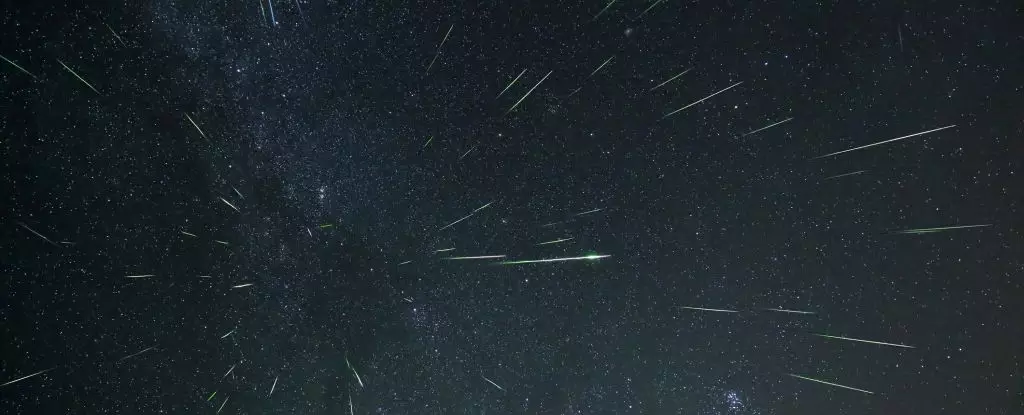Every year, the cosmos offers a dazzling display that captivates both casual observers and seasoned astronomers alike—the meteor showers of April and May. These celestial phenomena are not just random occurrences; they are timed events, the product of Earth weaving its path through cosmic debris left by comets and asteroids. This year, two prominent meteor events—the Lyrid meteor shower and the Eta Aquariid meteor shower—promise to illuminate the skies and inspire awe from all who look up.
Understanding Our Celestial Dance
Meteor showers occur when Earth intersects with the trails of dust and small particles left by comets as they orbit the sun. These blazing trails occur as particles enter our atmosphere, where friction ignites them, resulting in luminous streaks across the night sky. It’s almost poetic—the very remnants of a comet’s journey become part of our own experience. This celestial ballet happens consistently each year, allowing sky enthusiasts to prepare and anticipate their splendor.
This year, the Lyrid meteor shower runs from April 17 to April 26, reaching its peak on the night of April 21 to 22. To experience these magic moments, you won’t need any fancy equipment or telescope; all that’s required is your determination to get cozy in a suitable spot with an unobstructed view of the heavens.
The Lyrids: A Glimpse into the Past
The Lyrids are associated with Comet C/1861 G1, known as Thatcher, which gracefully completes its orbit around our star every 422 years. Its radiant point is nestled near the constellation Lyra, enriching the narrative of where these meteors originate. As the shower peaks this year, its visibility will be influenced by the moon, expected to be around 40% full. EarthSky, a dedicated astronomy resource, recommends that the prime time for catching meteors would be the evening of April 21, right before the moon rises.
As celestial bodies align, observers in the northern hemisphere can expect to see 10 to 15 meteors per hour on a clear night. However, those in the southern hemisphere may find themselves somewhat disadvantaged, as the Lyrids will be positioned higher in the northern sky.
Eta Aquariids: A Southern Hemisphere Showstopper
Transitioning from Lyrids, the next celestial event is filled with a sense of urgency and excitement—the Eta Aquariids. This meteor shower runs from April 20 through May 21, peaking on May 2 and 3. Named after their radiant position in the constellation Aquarius, the Eta Aquariids are historically known for their impressive displays, particularly in the southern tropics.
Giving proper due to their ancestral lineage, these meteors are remnants from Halley’s Comet, a celestial traveler with an orbit of about 76 years. Observers can look forward to up to 50 to 60 meteors per hour under optimal conditions in the southern hemisphere. Conversely, those in the northern hemisphere can anticipate fewer sightings, approximately 20 meteors per hour.
Preparation: The Key to Enjoying Meteor Showers
Preparing to witness these celestial wonders results in an enriched experience. First, minimize light pollution by finding a dark location away from city lights. Embrace the cool night air with warm clothing and perhaps a structure—a blanket or reclining chair—to make the observation comfortable. It’s a unique opportunity to disconnect from devices and momentarily replace that screen time with the serenity of the starry night.
Don’t forget to check local conditions or use tools like Time and Date to find the best viewing strategies tailored to your geographic location. Consider marking your calendar with the International Meteor Organization’s meteor shower calendar to stay ahead of upcoming events.
Experience a Moment of Cosmic Connection
Ultimately, meteor showers are reminders of the vastness and beauty of the universe. They offer an opportunity for reflection, awe, and marvel at our place within the cosmic tapestry. Engage wholeheartedly; observe, appreciate, and let these spectacular displays inspire you. As we sit beneath our neighborhood skies, let us absorb the enchanting sights, forever reminding us of the breathtaking wonders that exist beyond our planet. Happy meteor-watching!

